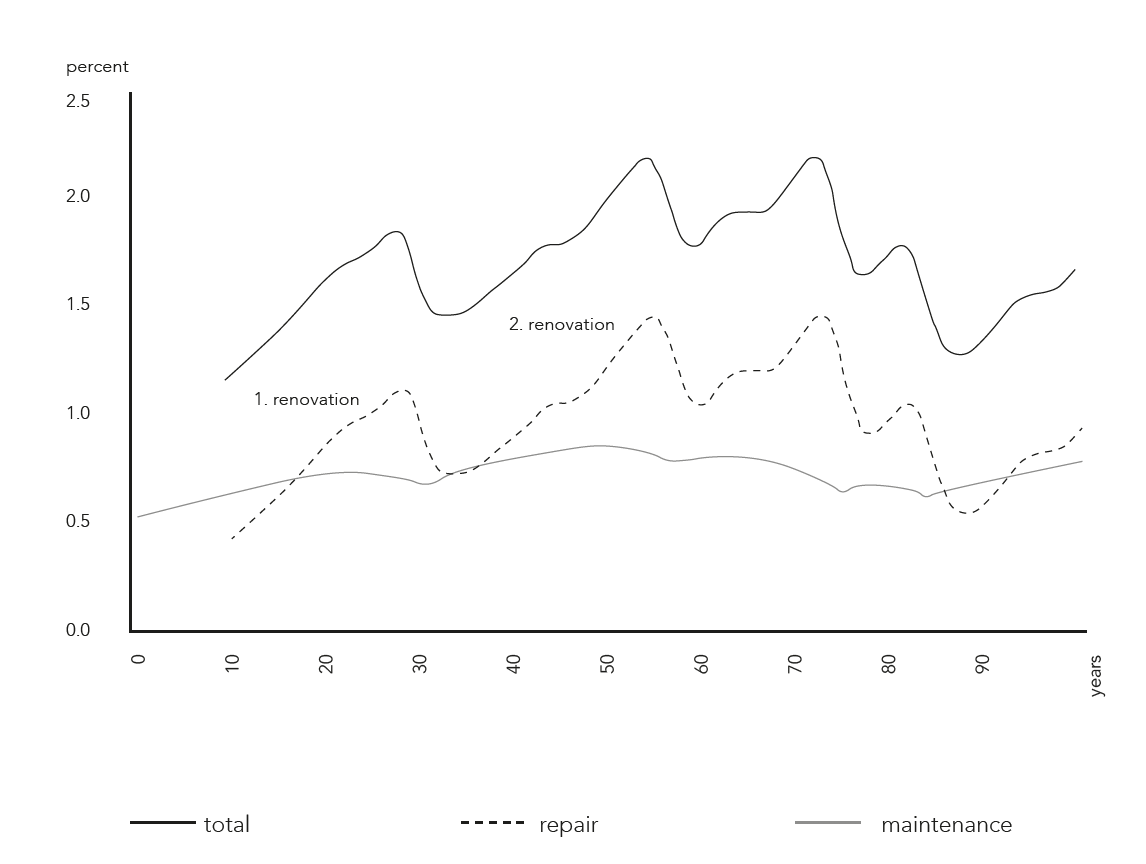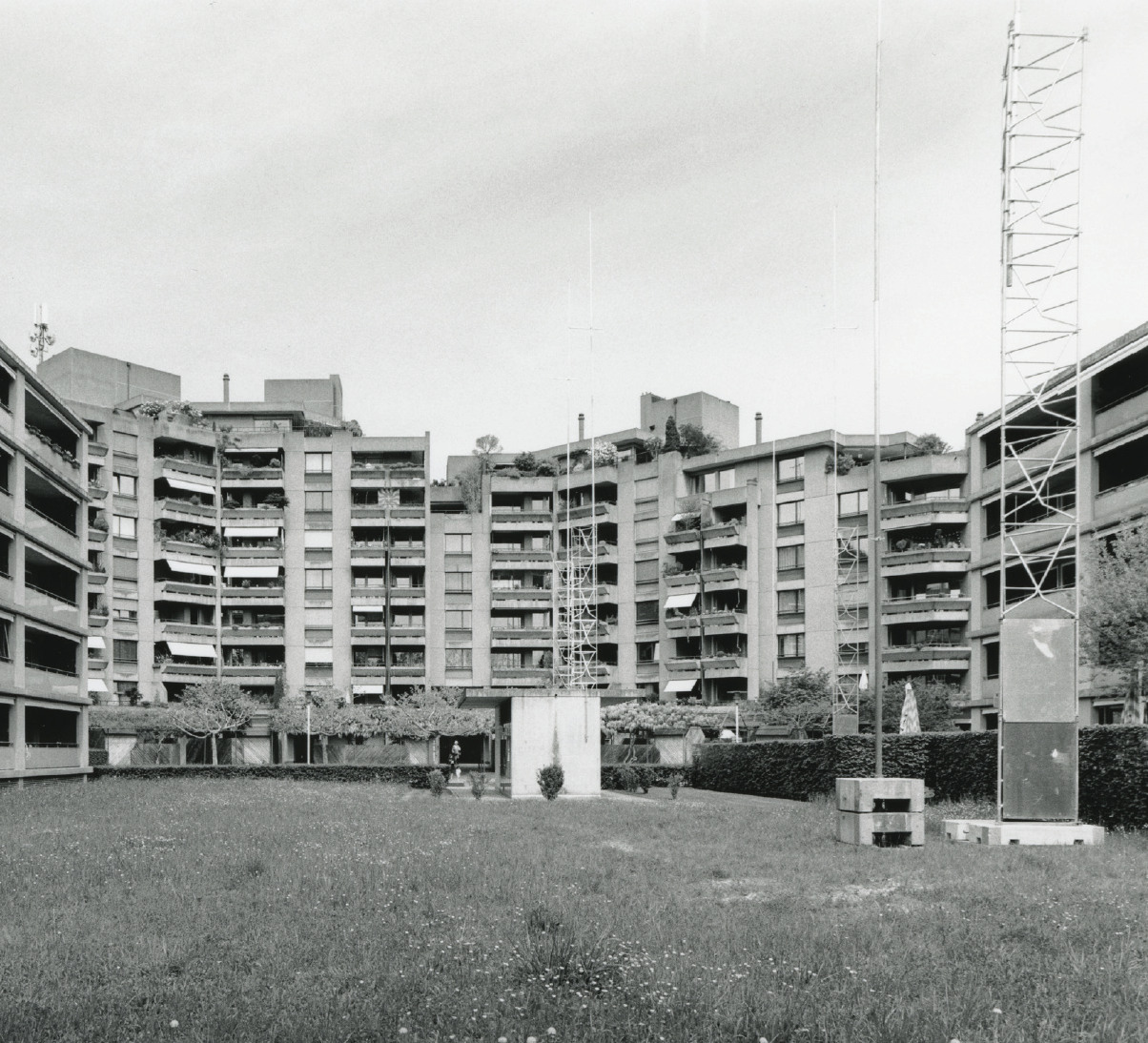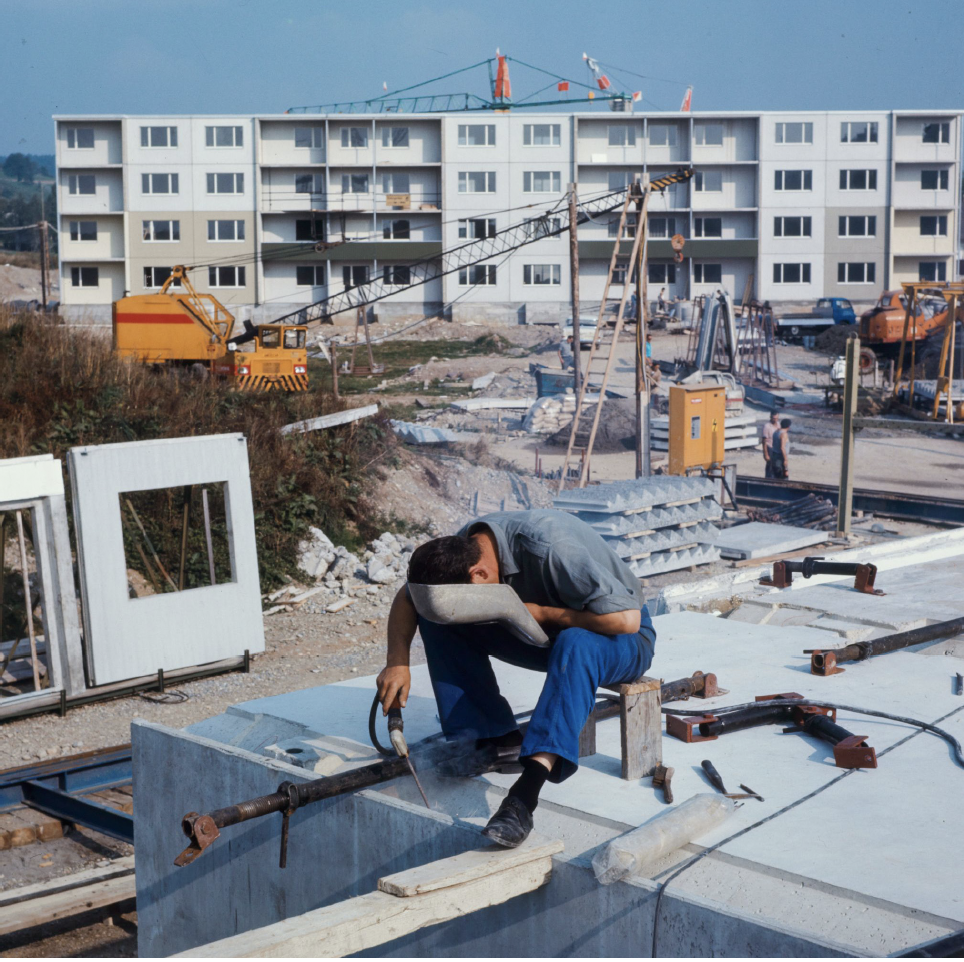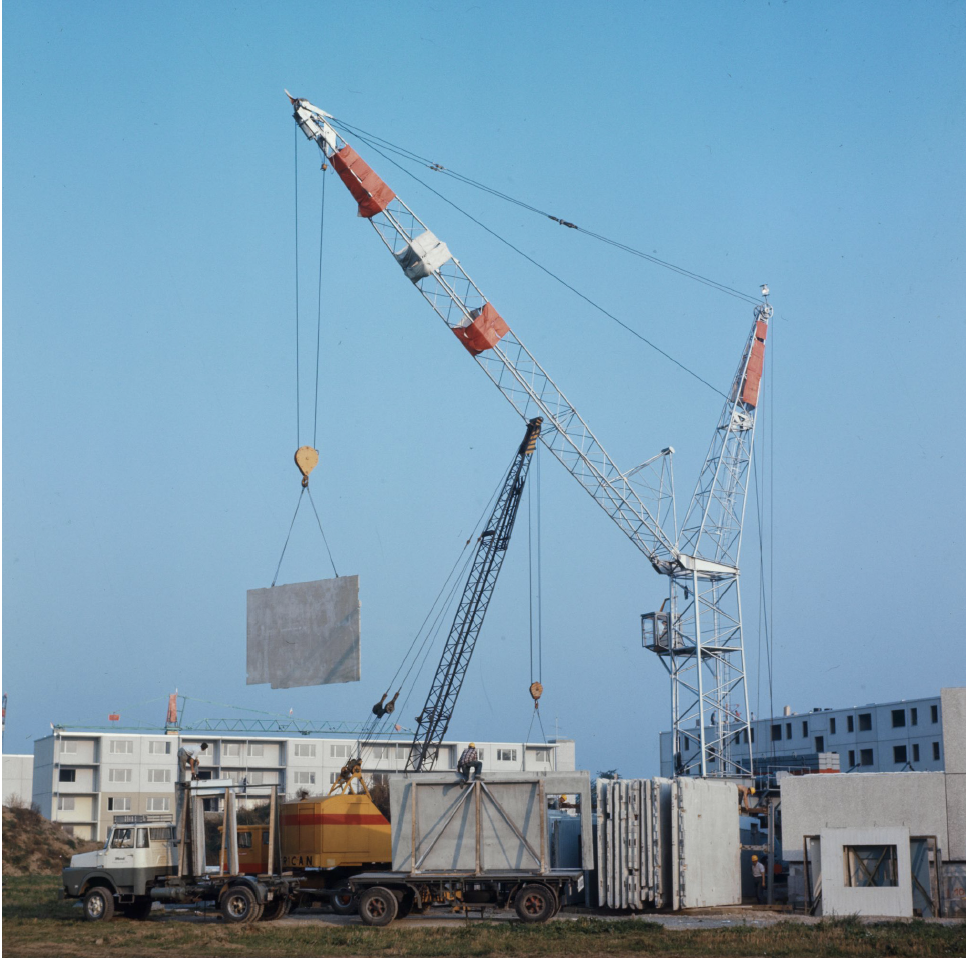BUILDING BOOM
The last two decades of transformation reflect the urban development
of Zürich. The high amount of replacement construction can be related to
the underlaying concept of renovation cycles. The maintenance of existing
buildings follows a repeating sequence. After 20, 50- or 70-years, maintenance
costs peak due to the cumulation of building components reaching
their life expectancy. In times of maintenance peaks, demolition offers an
alternative. As a result, many settlements from the immediate post-war
period have disappeared. Until today, densification and the incentive of
rent increase through replacement are arguments for demolition. Housing
seems to stay the driving force for the city’s transformation.
With the continuing growth of Zürich and a strategy of densification within
the city borders, the upcoming transformation will affect the buildings
from the 60’s to 80’s. The tendency is already visible in developments such
as the Brunaupark, a replacement housing project which attracted strong
media attention over the last year. This example lets us expect a similar
fate of replacement for younger settlements in Zürich.
These settlements originate in the boomer period, when almost a third of
the Swiss building stock was constructed. This period affected the housing
sector drastically, doubling the output of constructed flats per year from
40,000 to 80,000 in Switzerland. The boom was a consequence of a growing
population, increasing life standards, and a new consumer society.
To generate such a high output of buildings in a short time, new construction
logics had to be applied. For instance: prefabrication as a technique,
reinforced concrete elements, or building systems. Further, their ethics in
terms of design were new, their interdisciplinary approach towards housing
resulted in new forms of spatial organization.
In the case of Zürich, the boomer period did not only affect the outskirts
but also the city as a whole. The punctuation of the city fabric with housing
developments offers a first range of samples to study the potential
forces of transformation.

Maintenance in Switzerland by building age in years (cost in percent of building insurance)

Brunaupark, Zürich

Prefabrication of buildings as a characteristic of the boomer period, as a prime example the buildings of the Ernst Göhner AG. Foto: Comet Photo AG, Bildarchiv ETH Zürich

Construction site, Ernst Göhner AG. Foto: Comet Photo AG, Bildarchiv ETH Zürich



